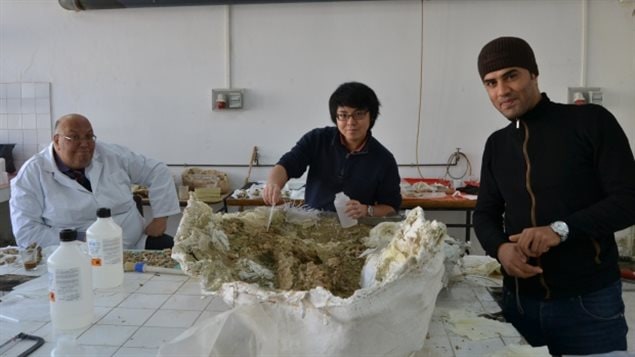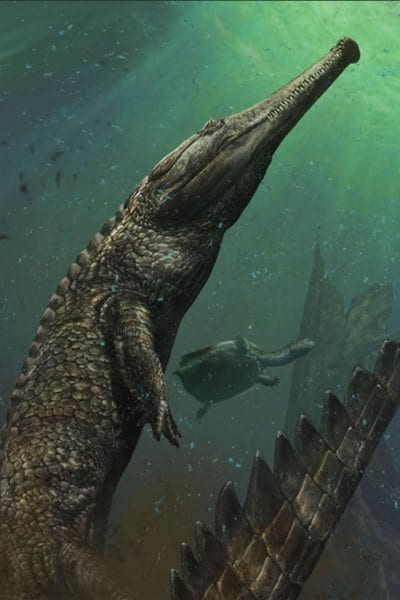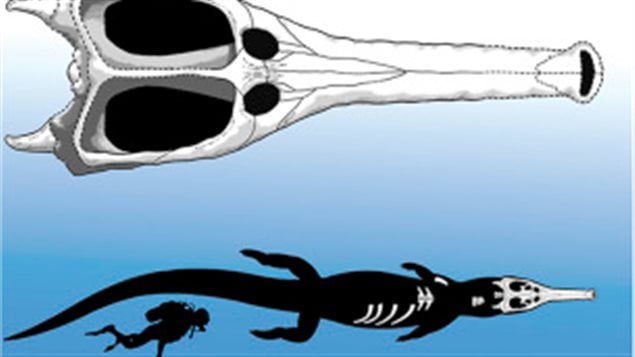It was the largest of ancient saltwater crocodiles, but strangely, not related to saltwater crocodiles of today.
It was big, probably around 10 metres long, with rows of large bullet-like teeth. Unlike some teeth, these seem designed not to pierce flesh so much as crush prey, likely ancient sea-turtles.

University of Alberta paleontology doctoral candidate Tetsuro Miyashita, was among the group of scientists who were able to identify the fossilized remains of the beast that roamed the shallow sea some 130 million years ago, in what is now Tunisia,
They’ve dubbed it Machimosaurus rex.


Study leader Federico Fanti, an assistant professor at the University of Bologna, was with a team working in an remote site about 50 kilometers from Tatatouine Tunisia. (This was near where portions of the original Star Wars were filmed as the home plant “Tatooine”).
The group found remains of ancient turtles, sharks, and the 1.7m skull of this unique large crcocodile, the last of this lineage which survived from the Jurassic to the Cretaceous period.
Earlier relatives, slightly smaller, lived in Jurassic era Europe but the species had previously though to have become extinct when those habitats were lost.
In recovering the skull in 2014, they realized the whole skeleton was there, but they had run out of time to recover it
In 2015, Fanti called Miyashita to join him. However, due to security issues with the unstable situation there they couldn’t go back to the site but were able to briefly examine the skull in Tunis and in the brief time they had to clean and examine the skull, were able to determine it was a new species, the last of its lineage.
Their discovery and research was published this week in the science journal Cretaceous Research
There is concern now that if they are unable to return to the site soon, sandstorms may rebury the remaining skeleton fossil making it difficult to find again, or simply sandblast the bones and destroy them.
Additional information-sources







For reasons beyond our control, and for an undetermined period of time, our comment section is now closed. However, our social networks remain open to your contributions.